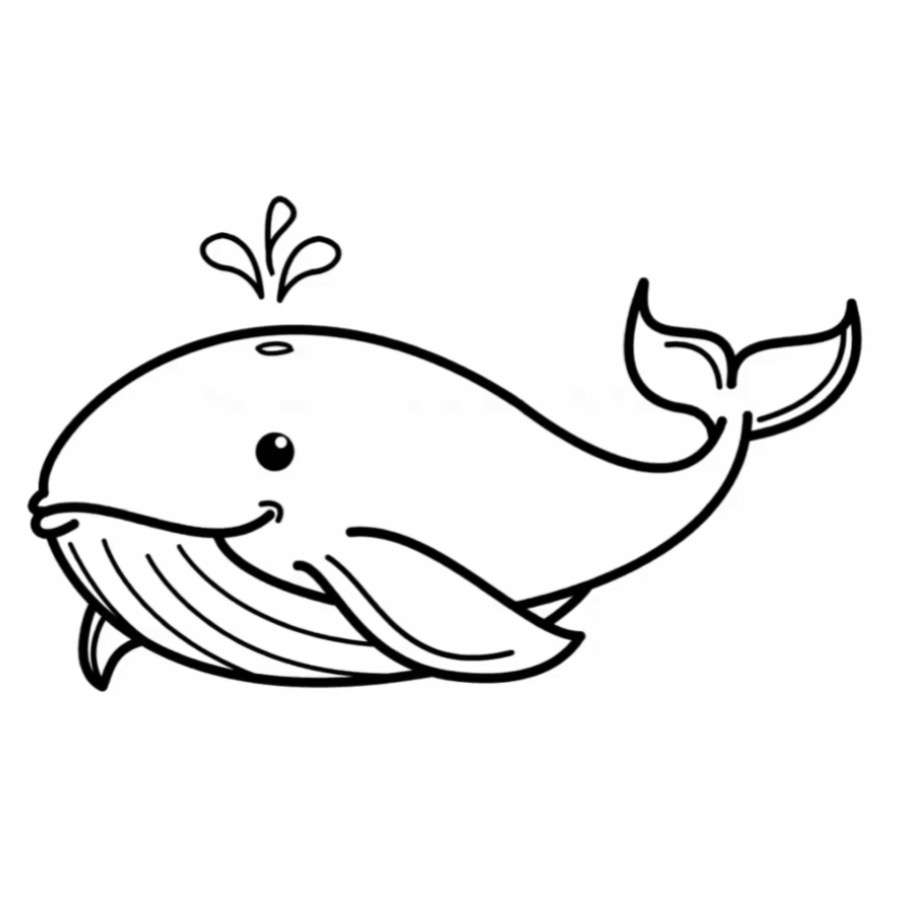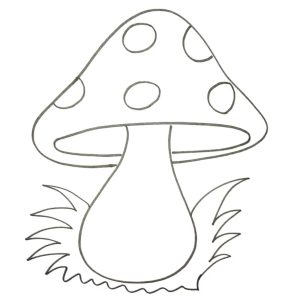Whale drawing – is an exciting and creative skill that can bring joy to both children and adults. The magnificent size and graceful nature of whales make them a fascinating subject for artists. In this article, we will explore various techniques and tips for kids to dive into the world of whale drawing. Now, let’s seize our pencils and embark on this creative expedition!
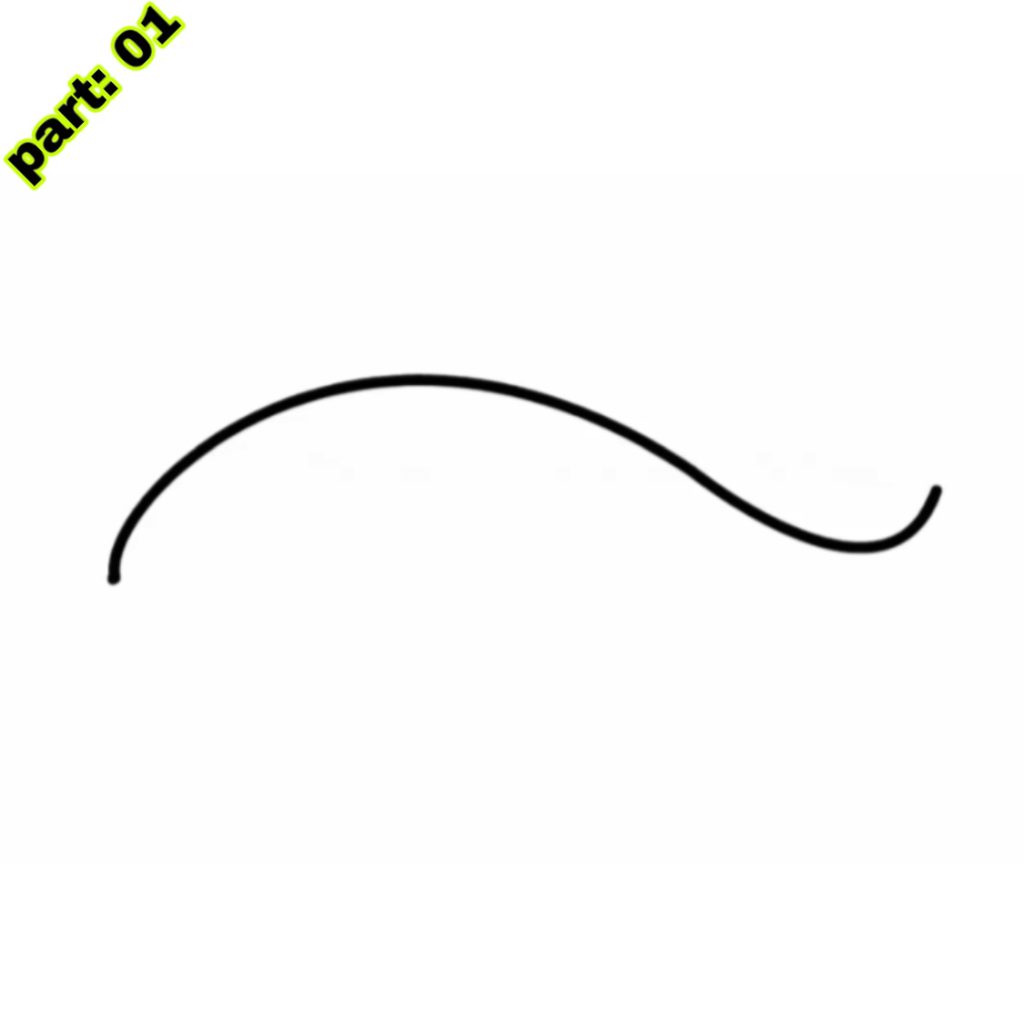
I. Introduction to Whale Drawing
A. Why drawing is an important skill for kids
Engaging in drawing goes beyond being a mere pastime; it is a vital aptitude that can bring countless advantages to children. It helps enhance their fine motor skills, hand-eye coordination, and cognitive development. Drawing also encourages creativity, and self-expression, and boosts their confidence.
B. Benefits of learning to draw whales specifically
Drawing whales specifically offers unique advantages. Through its means, children acquire knowledge about marine life, cultivate a deep admiration for nature, and grasp the significance of conservation. Additionally, drawing whales provides an opportunity to explore various artistic techniques and develop observational skills.

Gift:
Claim our premium worksheet practice book For Free (Only for you) :
II. Getting Started with Whale Drawing
A. Gathering the necessary materials
Before embarking on the journey of drawing whales, there are several fundamental materials you will require, such as pencils, erasers, drawing paper, and coloring tools like markers or crayons. Make sure to choose materials suitable for your child’s age and skill level.
B. Setting up a comfortable workspace
Creating a comfortable and organized workspace is crucial for an enjoyable drawing experience. Locate a brightly illuminated space with a tidy and uncluttered surface, allowing your child to readily access their art materials. This environment will facilitate their concentration and enable them to wholeheartedly engage in the creative journey.
C. Exploring different drawing techniques
Before diving into drawing whales, it’s beneficial for kids to explore different drawing techniques. They can practice basic shapes, lines, and strokes to develop their skills. Techniques like shading, cross-hatching, and blending can add depth and dimension to their artwork.

III. Understanding Whales: Anatomy and Features
A. Learning about whale anatomy
To draw realistic whales, it’s essential to understand their anatomy. Delve into the intricate anatomy of a whale, examining its distinct components like the head, body, flippers, and tail. Pay attention to proportions and the way these body parts relate to each other.
B. Identifying the distinguishing features of different whale species
Whale species exhibit a multitude of variations in terms of size, shape, and physical attributes. Meticulously examine the distinctive features that set apart various whale species, such as the elongated pectoral fins found in humpback whales, or the iconic black and white coloration exhibited by orcas. This knowledge will help in creating accurate and detailed whale drawings.
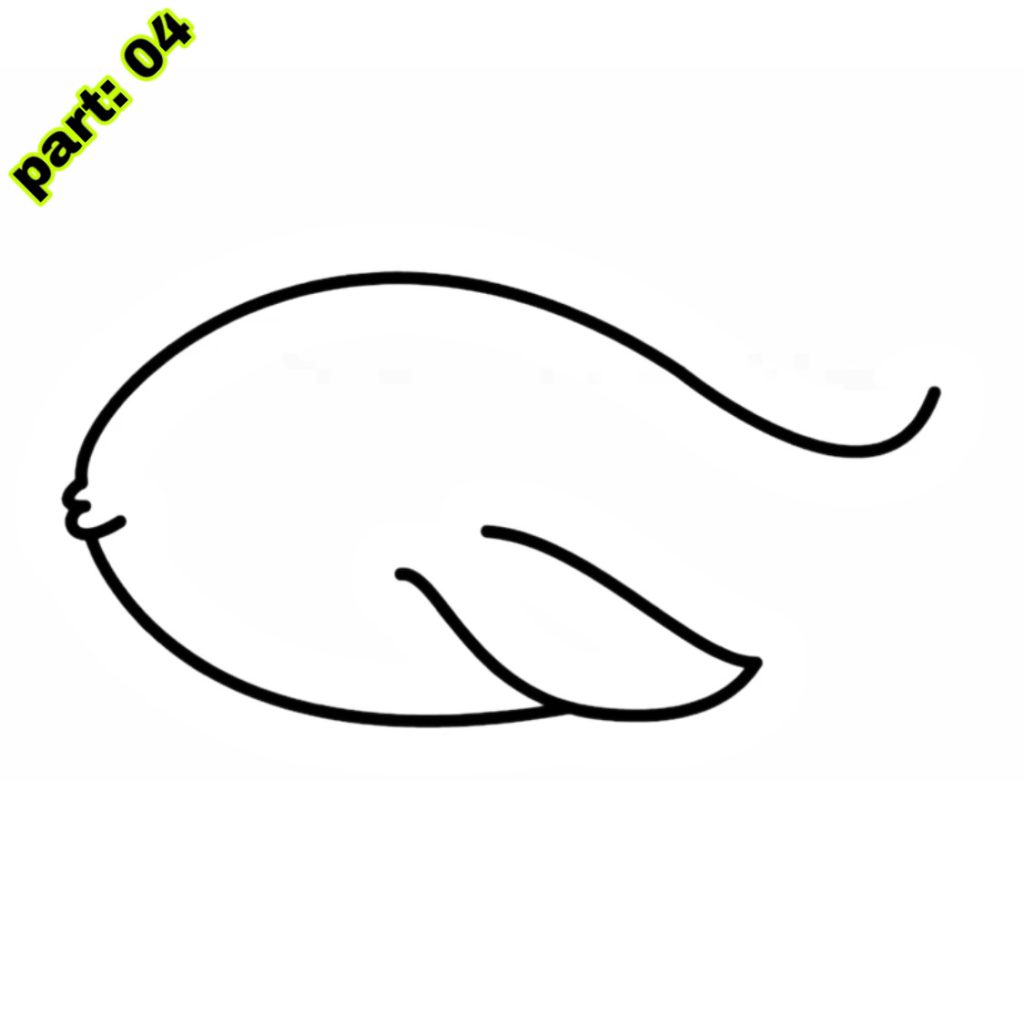
IV. Step-by-Step Whale Drawing Tutorials
A. Drawing a cartoon-style whale
- Sketching basic shapes: Start by drawing an oval shape for the body and a smaller oval for the head. Incorporate a gracefully curved line to depict the mouth.
- Adding details and expressions: Add eyes, a blowhole, and a smile or other expressions to give the whale character.
- Coloring options and shading techniques: Use bright colors to bring the cartoon whale to life. Introduce shadows and highlights to generate a sense of depth and dimension.
B. Drawing a realistic whale
- Creating a foundation with basic shapes: Begin by sketching the overall shape of the whale using simple geometric forms like ovals and triangles.
- Adding intricate details: Refine the sketch by adding details such as the mouth, eyes, fins, and flukes.
- Tips for shading and highlighting: Use shading techniques to create the illusion of volume and texture. Be attentive to the sources of light and incorporate highlights accordingly.
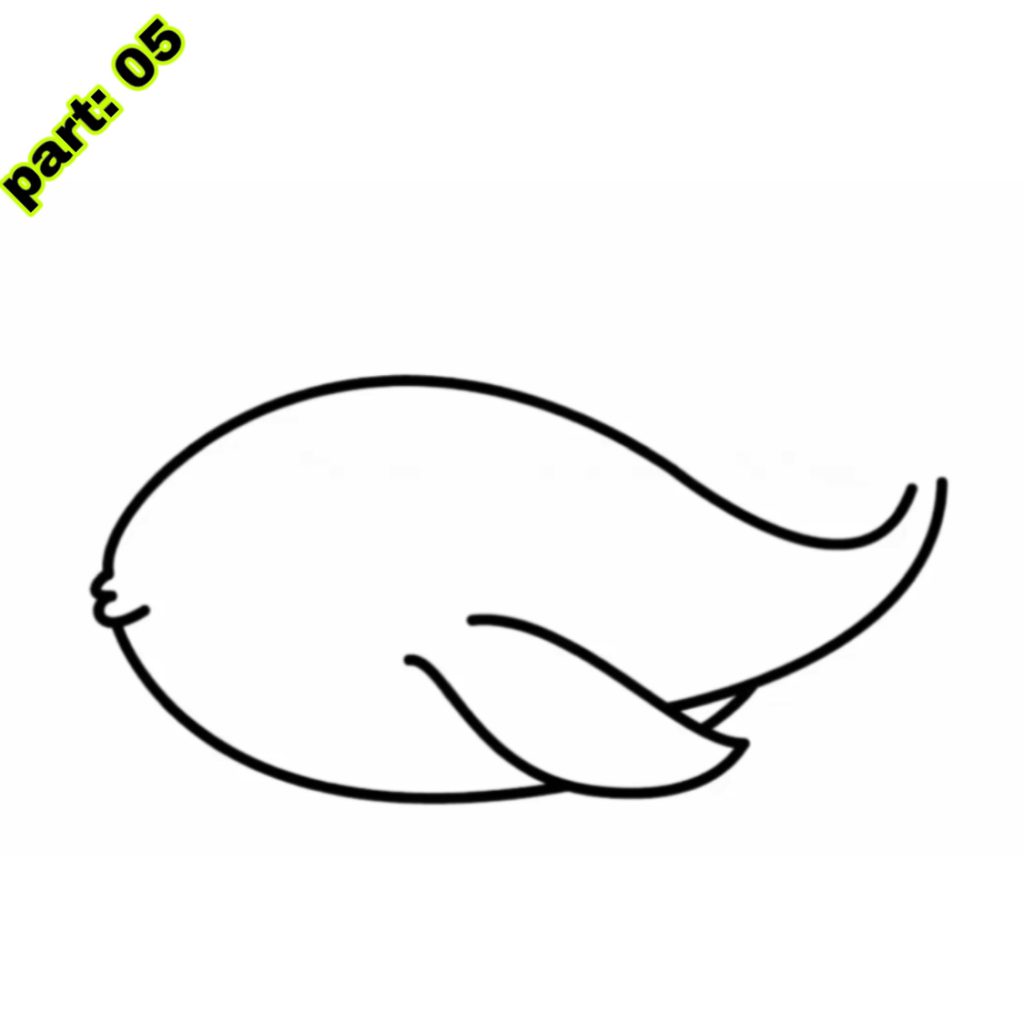
V. Exploring Different Whale Species
- A. Blue whale drawing tutorial
- Learn to draw the largest animal on Earth, the magnificent blue whale. Pay attention to its distinctive mottled appearance and the baleen plates inside its mouth.
- B. Orca (killer whale) drawing tutorial
- Discover how to capture the sleek and powerful form of the orca, also known as the killer whale. Highlight its black and white coloration and emphasize its muscular body.
- C. Humpback whale drawing tutorial
- Explore the graceful movements of the humpback whale through drawing. Focus on its long pectoral fins, knobbly head, and unique tail flukes.
- D. Sperm whale drawing tutorial
- Learn to depict the mighty sperm whale, known for its massive head and iconic blowhole. Pay attention to the wrinkled texture of its skin and the position of its flukes.

VI. Adding a Splash of Creativity
- A. Incorporating an ocean background into whale drawings
- Enhance the beauty of whale drawings by incorporating an ocean background. Experiment with different shades of blue and add waves, bubbles, or underwater plants to create a sense of depth.
- B. Adding other marine life to the artwork
- Take the artwork to the next level by including other marine life alongside the whales. Draw colorful fish, sea turtles, or dolphins to create a vibrant underwater scene.
VII. Whale Facts and Fun Trivia
- A. Fascinating facts about whales
- Delve into the intriguing world of whales with some fun facts. Share information about their size, migration patterns, communication methods, and feeding habits. Make learning enjoyable!
- B. Whale-themed games and activities
- Engage children further by suggesting whale-themed games and activities. Create crossword puzzles, word searches, or memory games centered around whales. This will foster their knowledge and provide entertainment.
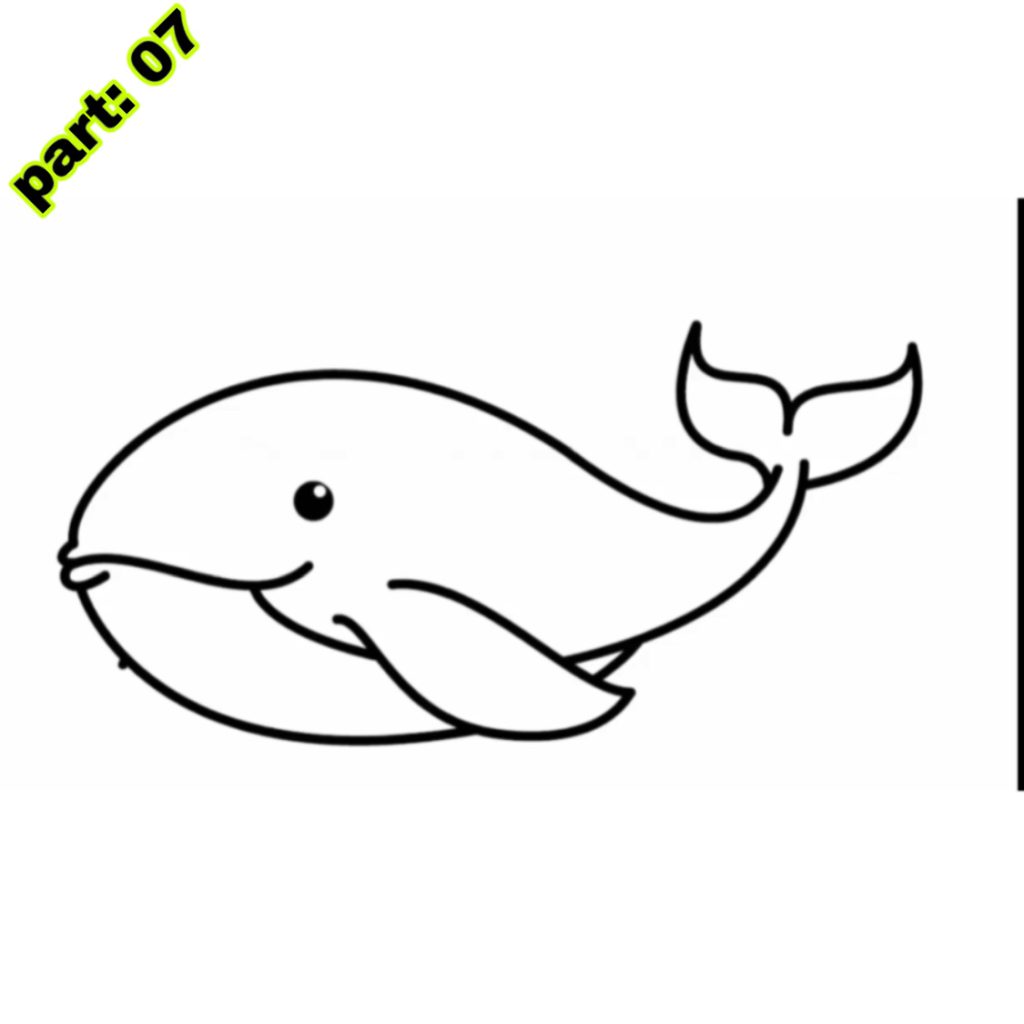
VIII. Whale Drawing Challenges and Competitions
- A. Participating in online drawing challenges
- Encourage kids to participate in online drawing challenges specifically focused on whales. They can submit their artwork, connect with other young artists, and receive feedback to improve their skills.
- B. Joining local art competitions
- Explore local art competitions that include a category for whale drawings. Participating in such events can boost confidence, inspire creativity, and provide recognition for your child’s talent.
IX. Showcasing Your Whale Artwork
- A. Tips for creating a gallery or portfolio
- Help your child create a gallery or portfolio to showcase their whale artwork. Frame selected pieces or arrange them in a scrapbook-style format. This allows them to appreciate their progress and share their work with others.
- B. Sharing artwork on social media platforms
- In the era of digital advancements, social media platforms offer an exceptional chance to share artwork with a broader audience, presenting a fantastic opportunity for artists. Help your child create an online presence by posting their drawings on platforms such as Instagram or Pinterest.

X. Whale Drawing in Other Art Mediums
- A. Exploring whale sculptures and clay modeling
- Whale drawing doesn’t have to be limited to paper. Encourage your child to explore other art mediums like clay modeling or sculpting to create three-dimensional whale artworks.
- B. Painting whales with watercolors and acrylics
- Introduce your child to the world of painting by using watercolors or acrylics to bring their whale drawings to life. Experiment with different techniques and color palettes to create stunning masterpieces.
XI. Inspirational Whale Artists
- A. Recognizing renowned artists specializing in whale drawings
- Explore the works of renowned artists who specialize in whale drawings. Highlight artists like Wyland, a marine life artist famous for his large-scale murals, and Robert Wyland, a contemporary artist known for his realistic whale portrayals.
- B. Examining their unique styles and techniques
- By studying the unique styles and techniques of inspirational artists, your child can gain insights and develop their own artistic voice. Encourage them to experiment with different approaches and adapt them to their own drawings.

XII. Whale Conservation and Education
- A. Raising awareness of endangered whale species
- Educate children about the importance of whale conservation and the challenges faced by endangered whale species. Discuss the impact of human activities on their habitats and promote ways to protect these magnificent creatures.
- B. Supporting organizations dedicated to whale conservation
- Encourage your child to take action by supporting organizations dedicated to whale conservation. They can participate in fundraising events, volunteer their time, or spread awareness through educational campaigns.
XIII. Summary
- A. Recap of key points covered in the article
- In this article, we explored the world of whale drawing and provided techniques and tips for kids to embark on this artistic journey. We discussed the importance of drawing as a skill, understanding whale anatomy, step-by-step drawing tutorials, incorporating creativity, and the significance of whale conservation.
- B. Encouragement to embrace whale drawing as a creative endeavor
- Drawing whales can be an exciting and fulfilling experience for kids. Encourage them to embrace this creative endeavor, explore their artistic potential, and develop a deep appreciation for these magnificent creatures.
Sponsored By:
Check out the best and most affordable digital marketing services that can take your business to the next level. If you want a build a Blogging Business, Please contact them; They Basically provide from-scratch-to-finish services https://elonmusktrillion.com/

XIV. FAQs
A. What are some common mistakes beginners make in whale drawing?
Beginners in whale drawing often struggle with proportion and anatomy. It’s important to practice observing reference images and paying attention to the relationships between different body parts.
B. How can I overcome drawing challenges while recreating whale features?
Drawing challenging whale features can be overcome by breaking them down into simpler shapes. Start with basic geometric forms and gradually add details. Practicing specific features repeatedly, such as eyes or flukes, will also help improve accuracy.
C. Are there specific techniques for drawing realistic water reflections?
To draw realistic water reflections, observe how light interacts with water. Pay attention to the direction of light and create a mirrored image of the whale, slightly distorted and blurred, to represent its reflection in the water.
Bonus:
You may check out our most helpful article about how you can help your child to do extremely well in drawing https://bloggchain.com/beautiful-gorilla-drawing-for-kids/
